India, it’s religions, diversities and the customs and traditions that come along with its diverse topography is mind-boggling. This is unique to our country alone, where we have the most colourful and vibrant celebrations of our traditions and rituals. In fact, one of the most important factors contributing to the rise in the travel & tourism industry within our country has to be the events and festivals meticulously organised in each and every state promoting the distinct traditions followed and the festivals celebrated in that particular place. Be it the grand Shobha yatra held during Gudipadwa, or the humongous scale of Ganpati festival celebration in Maharashtra, the energetic boat race or Pooram celebrations in the state of Kerala, the world-famous Dasara festival of Mysore in Karnataka, myriad colours of Holi celebration in Mathura in the state of Uttar Pradesh, these are just a few events that easily pop up in mind when we think about the colourful events here in India and the list goes on. These events not just attract a huge crowd but also introduces the people to various cultures and rituals at close quarters in the process providing for an excellent opportunity to document the happenings. Where there is colour, there is a photographer. Well, in simple terms, the events and celebrations could be a photographer’s delight. One such event where the colour yellow dominates both the land and the skies is the festival of Bhandara.
It is ironic that I am writing this blog post of the colourful festival called ‘Bhandara’ (turmeric powder), now in July 2020, while this year’s celebrations are called off due to the understandable situation of the pandemic. It has been almost one year and a month since the last festivities and somehow I couldn’t manage to write down the article – generally, I write soon after my trips. Probably it was destined to be written now when this year’s Bhandara celebrations are called off due to the prevailing scary pandemic situations. Nevertheless, it does make sense to relive the festival and those lively moments through a short writeup and the pictures now. So going back to June 3, 2019, here I recount my experience of being right on top of the temple terrace watching the entire sky, temple and people shrouded in the alluring yellow veil called Bhandara.
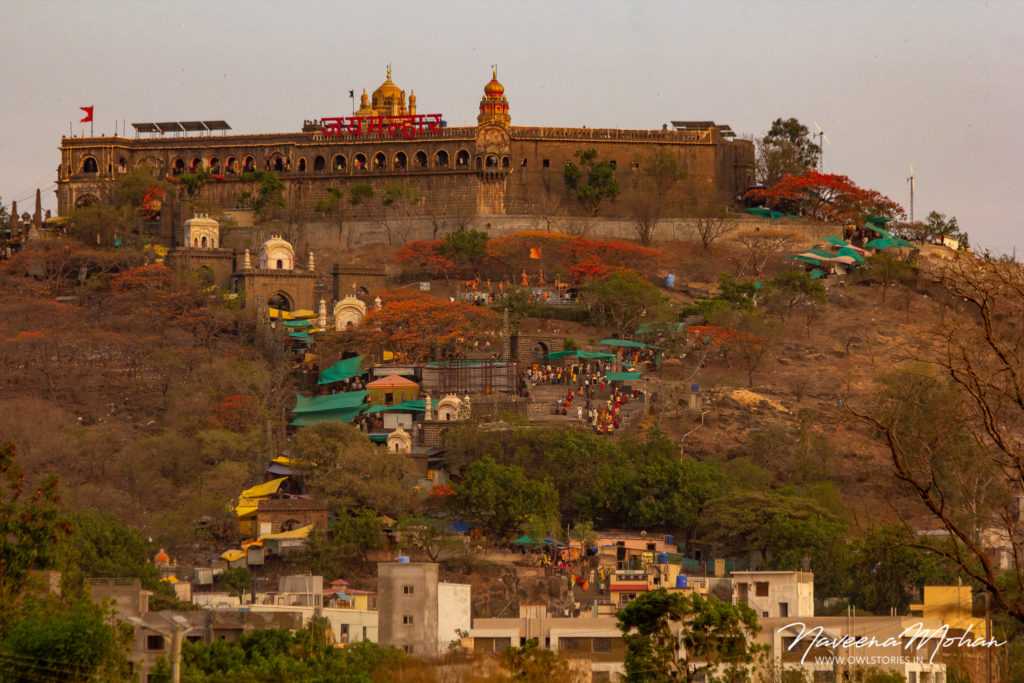
Temple of Jejuri perched atop the hillock, with the shining domes
The domes of the Khandoba temple on the hillock shone with a glint of gold, as the sunset closeby. It was just a preview to what we would see the next day. It was late in the evening when we reached Jejuri. A group of photography enthusiasts and curious visitors, all geared up to witness the celebration the next morning, of this popular festival of turmeric ‘Bhandara’; we had travelled from Mumbai to Jejuri. A short visit to a temple lying in ruins – going off the regular route, Palasnath, was a bonus before reaching Jejuri, though.
A small city and a municipal council in Pune district of Maharashtra (India), Jejuri has shot up to fame in recent years. Popularly known as ‘Sonyachi Jejuri’ (Golden Jejuri), derives that adjective from the fact that the entire city is drenched in the golden yellow glow of Bhandara, during the festivities. Located about 50 kilometres from Pune and 200 kilometres from Mumbai, it’s an easy drive to reach the temple of Khandoba in Jejuri, where the festivities are held every year.
- Stairway to the temple
- Early morning walk begins with bhandara offering at the foothills
The temple located on this small hillock is easily accessible from the highway. A short walk through the narrow lanes flanked by small shops catering to all the pooja offerings to the deity makes for an interesting observation. A quick climb of the uneven steps along with the thronging devotees chanting Yelkot Yelkot or Jai Malhar builds up the momentum for the actual celebrations in the temple complex.

It’s still dark – Inside the temple, devotees light diyas
Jejuri and it’s reigning deity Khandoba, revered as the kuladaivat, the family deity, is considered to be the manifestation of Hindu god Shiva and worshipped mainly in the Deccan part of India – Maharashtra, some parts of Karnataka and Andhra. Known also by the names Malhar, Martanda bhairava, Mallanna or even Malhari, the deity is significantly worshipped by the Dhangar (shepherd) community, hunters, warriors as well as farming communities and tribes. Portrayed in the form of lingam or the warrior riding the horse, this deity has temples across Maharashtra and Karnataka of which the fort temple in Jejuri, Maharashtra is considered to be of great importance.

Daybreak, the sky turns magical blue
Day breaks and the sky turns a pleasant blue as the crowd starts gathering in the temple courtyard. The devotees arrive with the offerings of Bhandara, in abundance. The festive mood picks up – drenched in turmeric powder or their faces smeared all over with it; men, the most jubilant of all, walking inside with the yellow palm imprints on their white attire. The temple is abuzz with activities, devotees, some heading straight to the sanctum sanctorum to get a glimpse of the deity before the event begins, a few queue up to light the lamps even as others occupy the vantage places to witness the event. Visitors already showering the temple with the turmeric powder, the courtyard assumes the colour of the day – Yellow! Oh yes, Bhandara everywhere!

Bhandara; devotees arrive with the offerings

Mani, one of the demons believed to be slain by Khandoba is seen worshipped in the Jejuri temple
Bhandara, the ritual and festival
A renowned folk deity, Khandoba, is mostly depicted seated on a horse along with his wife or sometimes both wives; four arms, each holding a damaru (drum), trishula (trident), khadga (sword) and the most significant bhandara-patra (bowl of turmeric powder).

Khandoba, riding the horse
Bearing extensive similarities from being a fierce deity similar to Lord Shiva, Khandoba is also believed to have 2 wives Mhalsa and Banai very similar to Shiva himself, married to Parvati and Ganga. The deity is worshipped mainly with the offerings of coconut, bel fruit leaves and the most important of all, Bhandara, the turmeric powder. The other offerings also include onions & vegetables, savouries like puran-poli and also non-vegetarian offerings of goat flesh. A renowned folk deity, Khandoba, is mostly depicted seated on a horse along with his wife or both wives; four arms, each holding a damaru (drum), trishula (trident), khadga (sword) and the most significant bhandara-patra (bowl of turmeric powder).

The palkhi woman awaits the deities arrival
The ritual of Bhandara is typically held on the Somavati Amavasya which always coincides with a new moon specifically on a Monday. Folklore suggests various significance of the use of this holy space. It is popularly believed as the celebration of the wedding of the deity Khandoba with the bride Mhalsa, and turmeric is the auspicious offering and part of any wedding ritual, Bhandara is offered on this day. It’s not just the offering of Bhandara, but Bhandara itself can also be considered as the ardour or the devotion where the devotees are seeking knowledge, as appropriately described by Saint Eknath. The turmeric bowl also signifies the wealth and riches and in all probability the devotees seeking prosperity.

Raining Bhandara highly colourful and festive mood with the energetic singing and dancing devotees smearing the turmeric powder on each other’s face marks the beginning of a very grand event. It is at the predetermined auspicious time, the palkhi (palanquin) with the idol of the deity is brought out and taken around the temple complex, by the temple trust staff and some devotees. Thousands of devotees already congregated in the temple to witness the event shower the deity with loads and loads of turmeric as the procession begins. Land and the skies are completely taken over by the golden hues and then one is reminded why it is called ‘Sonyachi Jejuri’.
The ritual lasts about half an hour inside the hilltop temple premises and then the procession heads to the river Karha for a holy bath to the deity. Even as the deity is taken to the river, the temple complex is abuzz with activities. Singing songs praising the deity, narrating the folktales are all part of the celebrations. The crowd tapers down after a while with the darshan of the deity inside the temple.

The procession leaves the temple and makes way towards the river

Inside the temple courtyard, some age-old traditions followed
- Sharing the prasad
- Some are still busy collecting the bhandara
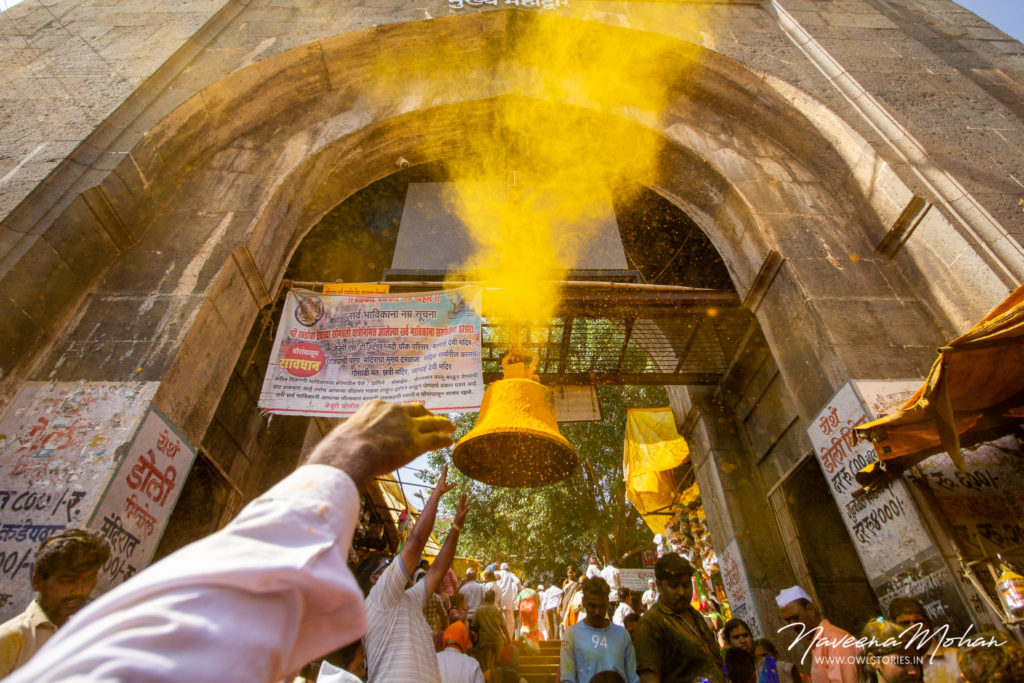
Bhandara, it is!
A small note of thanks: It was a pleasant experience travelling with My India Adventures (Mr. Santosh Nimbalkar) who was the organiser of this budget trip. I look forward to joining the group even on other trips in the future.
- Jejuri is a city well connected by road and trains from Pune and Mumbai.
- Decent hotels and stay options are available. Bhandara happens to attract huge crowds in the recent few years
- The festival dates can be checked online to make plans well in advance. The festival is held every year on Somvati Amavasya- a new moon day that falls on a Monday. This occurrence can be more than once a year.
- Take extra care to protect photography equipment. A roll of cling wrap would be very useful so don’t forget to carry them
- The event is held in the new fort temple of Khandoba
- It is a good idea to reach the temple a bit early before the crowd starts pouring in
- It is will be helpful to walk in basic chappals and to pack and carry them in a bag if possible, just before climbing the stairs to the temple (it is impossible to locate them in case one leaves them anywhere near the temple gates)
- The best place to click photos of the event would be from the temple terrace, which is accessible only before the event begins
- The stairs to the temple terrace are extremely narrow, one needs to be very careful
Returning to the hotel from the temple turned out to be a marathon task – the sun in its full glory and me in bare feet, jostling my way through still-thronging-crowd! Do I need to explain anything further? Well, some street moments kept my mind off my burning feet, at least it tried!
Here’s a virtual tour of the celebration. Watch this video!

Busy Bhandara stall owner
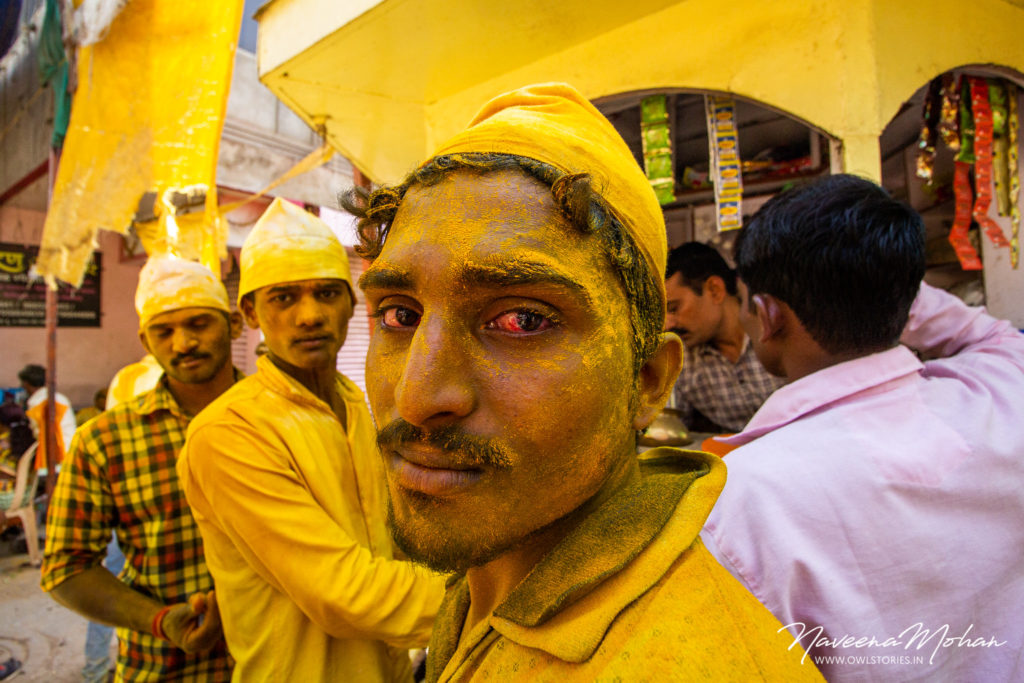
Yellow or the red?



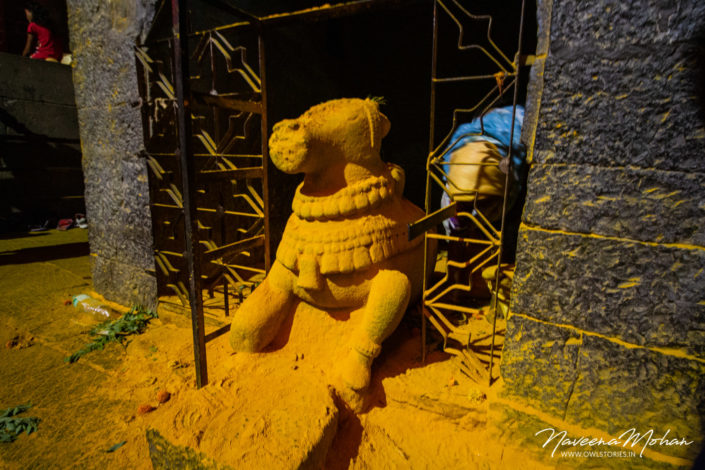
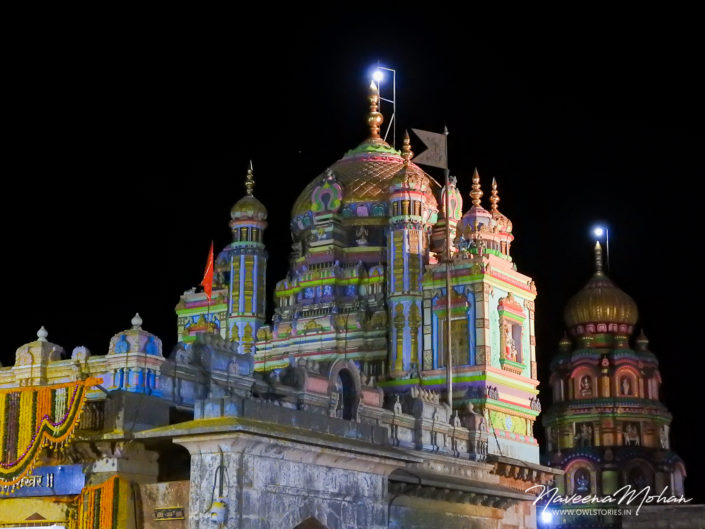

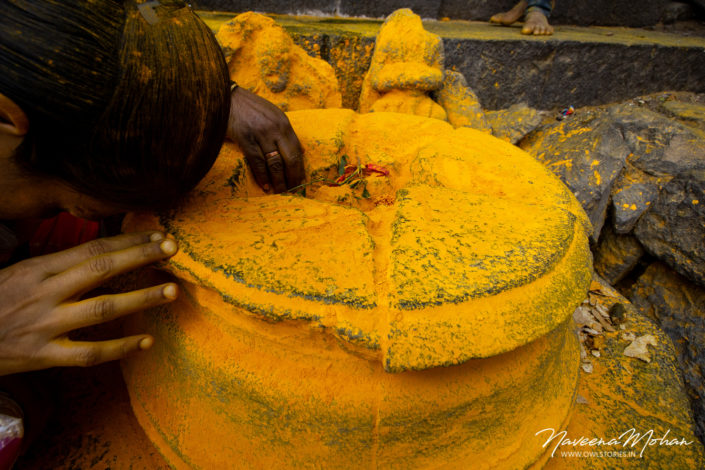




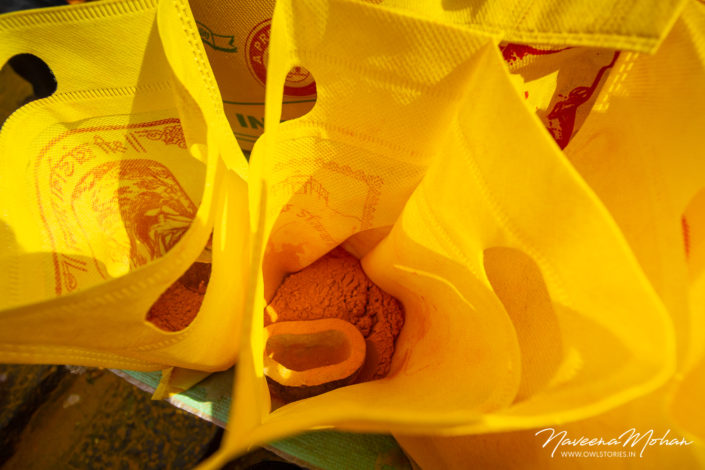

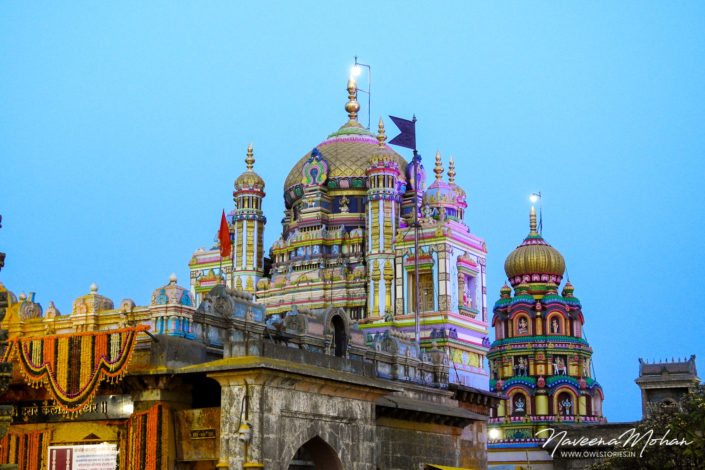







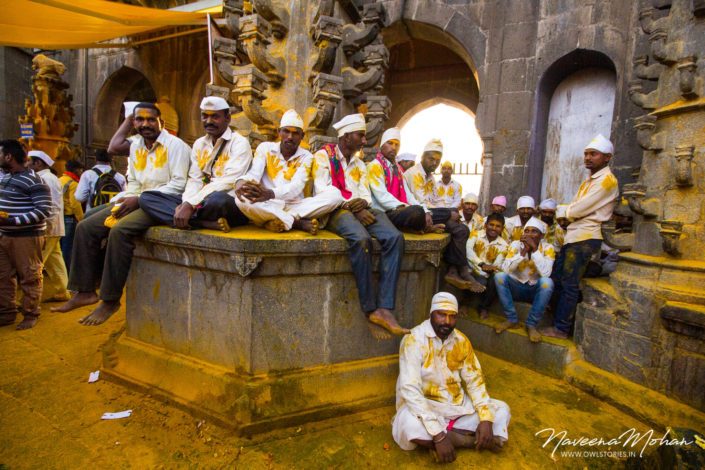









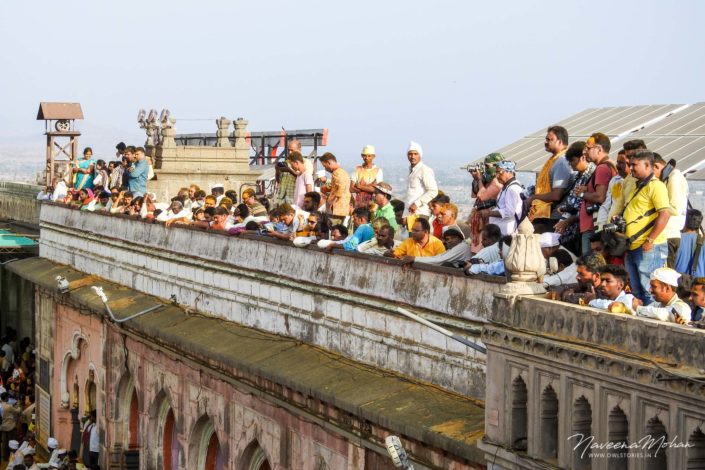




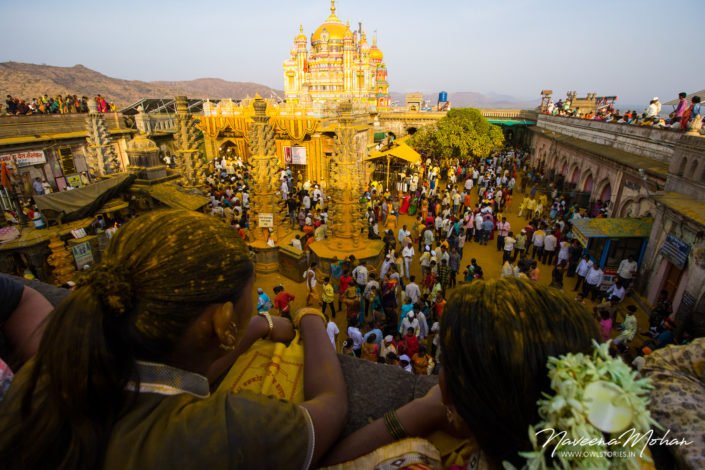

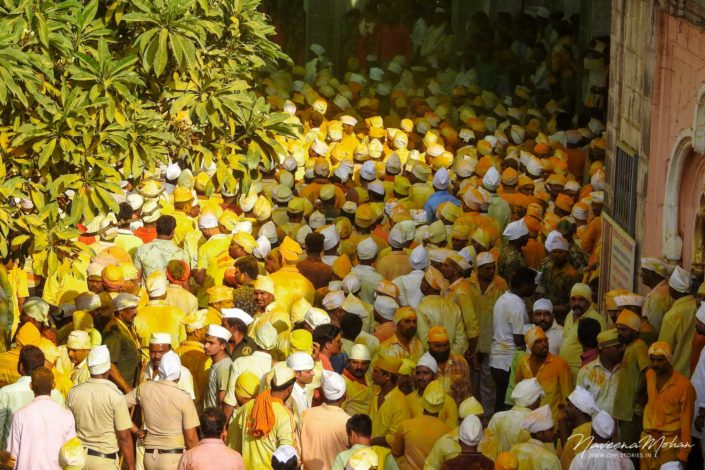






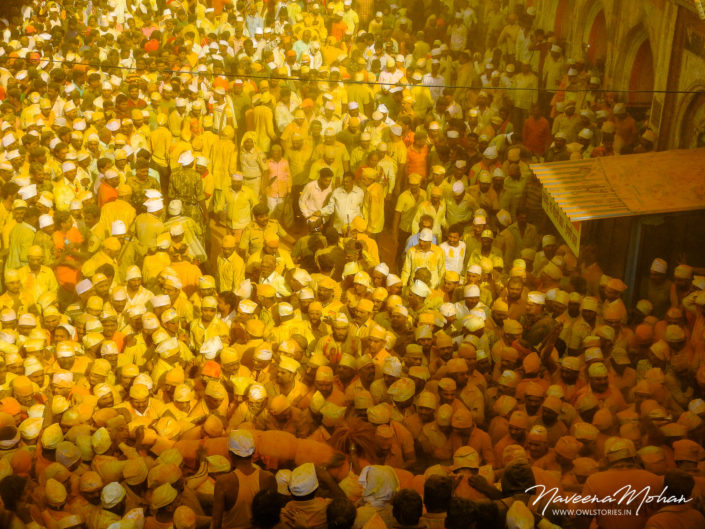


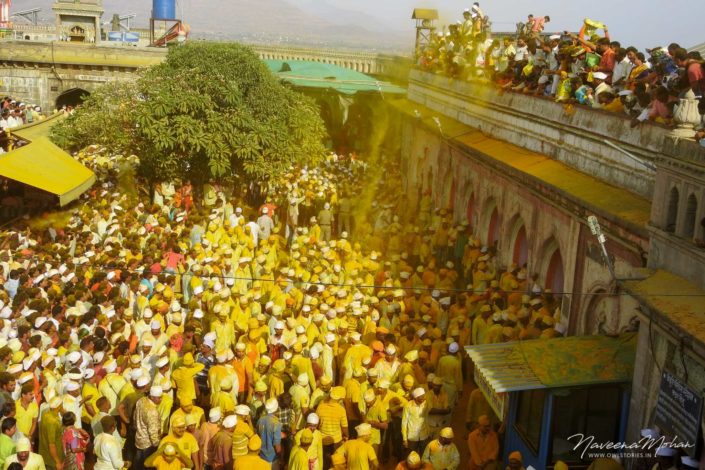
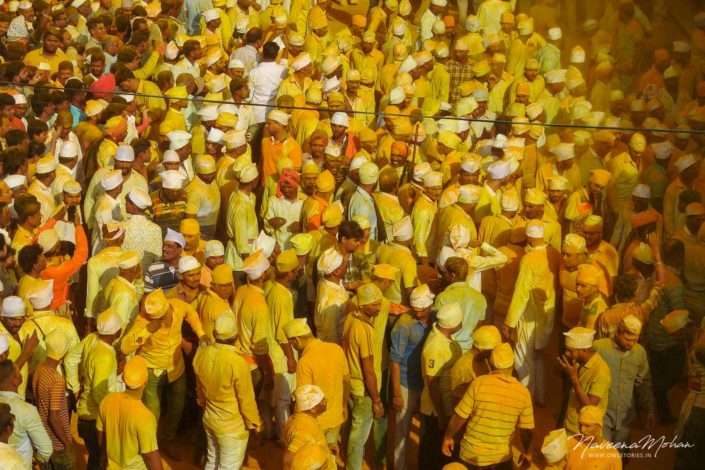


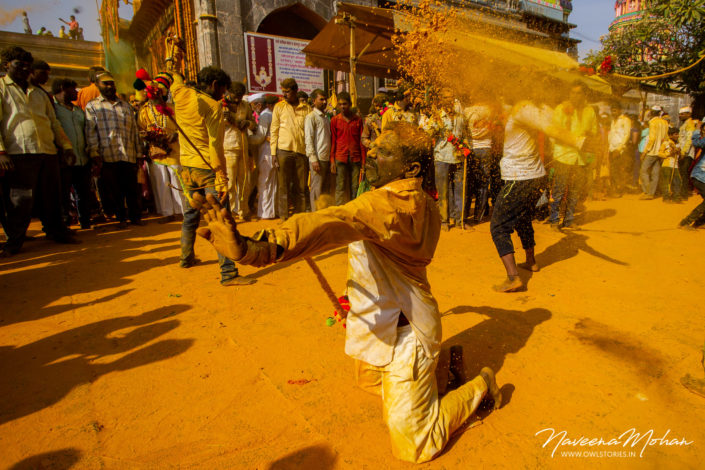
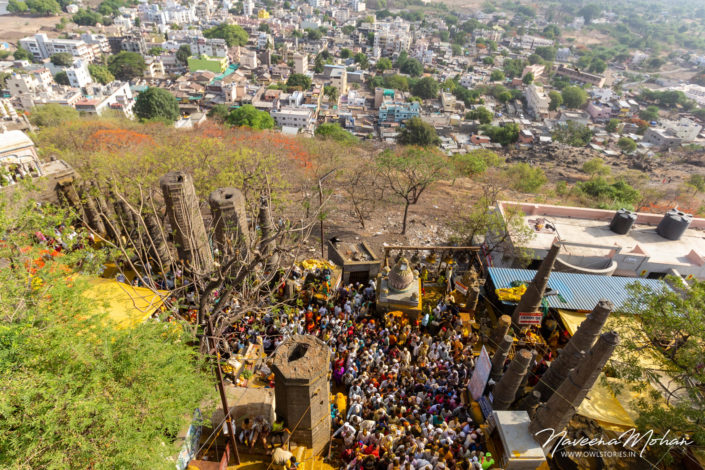


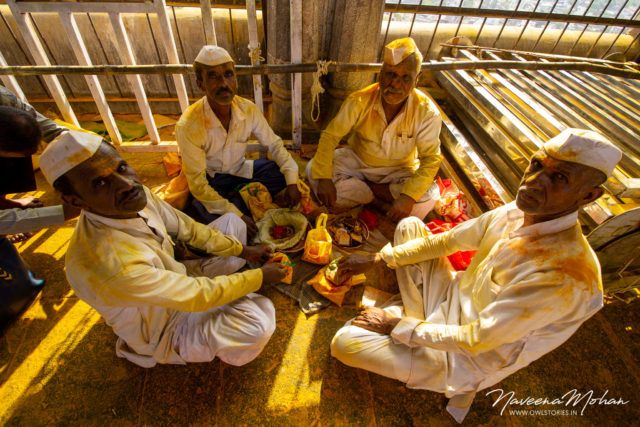

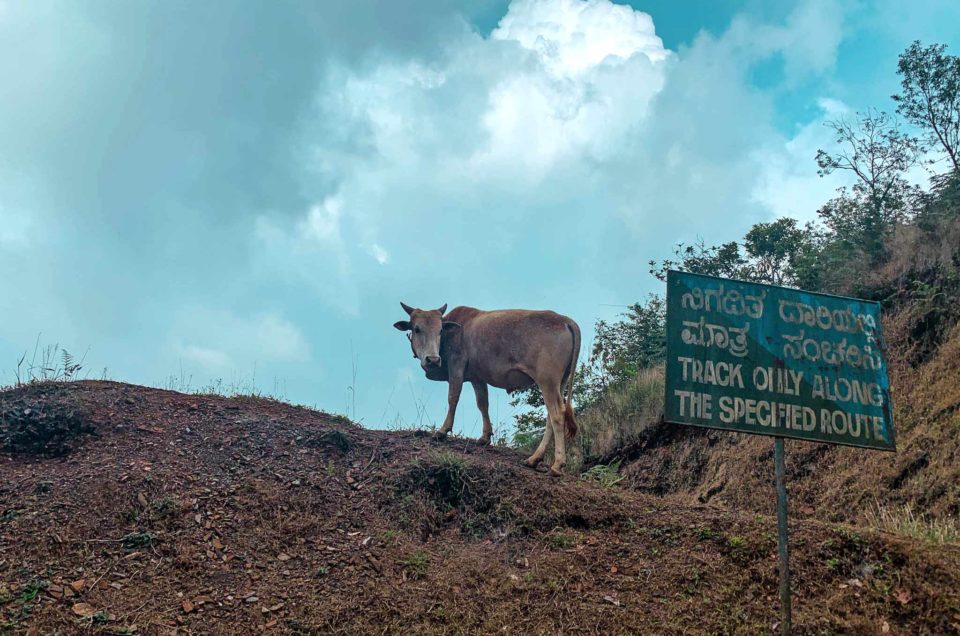


3 Comments
Girija Bhatkar
superb pics and video too.It is always treat to eyes. Your vlog gives perfect experience of visiting that place in person.Apt narration relating to catchy pics including history ,geography of the place.Being Khandoba our kuldaiwat as you mentioned we visited the place last yearbut couldn’t attend bhandara ceremony. Thanks for giving virtual pleasure .
Naveena Mohan
Hi Girija, Many thanks for going through the blog. I am glad that you liked the post and it’s content. You must try to attend the bhandara event if possible next year. I am sure you will like it more so since Khandoba is your kuladaivat. The festivities are worth the visit.
Neel Shishir Bhatkar Bhatkar
surely try..👍